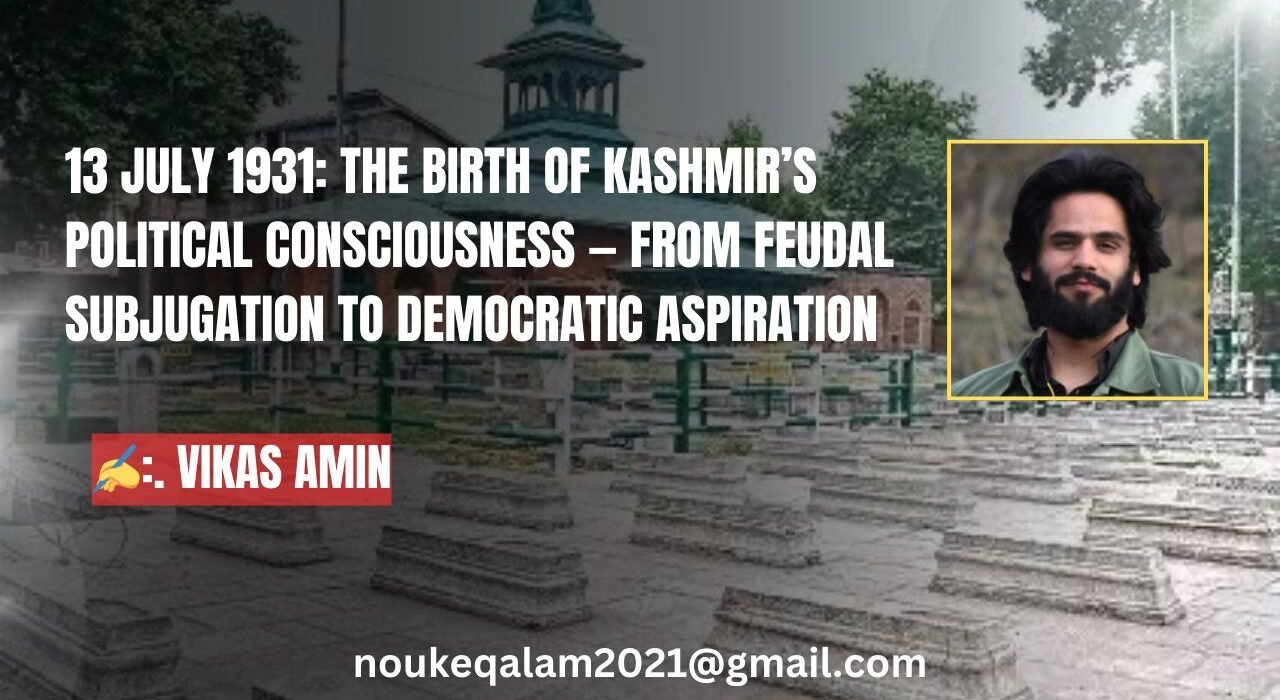How do we write the political history of a state comprising millions condemned to a wretched existence under successive colonial occupations? How do we capture the voices of a people who never tasted sovereignty, whose homeland remained a pawn on the imperial chessboard—caught between Mughal grandeur, Afghan tyranny, Sikh oppression, Dogra feudalism, and British manipulation?
From the Mughal annexation onward, Kashmir was governed not for its people, but for its strategic location, scenic beauty, and resources—first as a summer retreat, later as a geopolitical buffer. The famed Mughal gardens, built on the backs of overtaxed and unpaid Muslim peasants and artisans, symbolized surplus appropriation and imperial aesthetics. This exploitative model of rule continued under the Afghans, Sikhs, and Dogras, each more ruthless in enforcing dominance.
Under Afghan rule, Kashmiris faced heavy taxation, forced labor, and even enslavement. The Sikh regime continued the repression, curbing Muslim religious freedoms and institutionalizing discrimination to the extent that a Muslim life legally held less value than a Hindu’s. The British, while posturing as liberals, sold Kashmir to Gulab Singh for a mere 7.5 million rupees under the Treaty of Amritsar in 1846—reducing an entire people to a commercial transaction. The Dogra ruler infamously declared in 1892, “The state is my property; it belongs to me as part of my hereditary estate,” revealing a system more autocratic than even Europe’s bygone monarchies. The people were treated not as citizens but as subjects—merely taxable bodies.
One of the darkest episodes of Dogra rule was the famine of 1877. While thousands starved, the regime prioritized tax collection over relief. No significant aid was dispatched. Instead, the Dogra state imposed high taxes on already impoverished Muslim peasants, tightening its grip during a humanitarian crisis. Even British Viceroy Lord Lytton described the regime in 1880 as “morally bankrupt, vicious and corrupt,” acknowledging Britain’s own role in empowering an alien ruler over the Kashmiri people.
By the early 20th century, Muslim exclusion had been institutionalized. Though Muslims made up more than 70% of the population, they were systematically denied land rights, employment, education, and justice. The 1921 census and administrative records expose this religious and class-based apartheid: in the customs department, 120 non-Muslims to just 4 Muslims; in education, 150 to 9; in revenue, 113 to 35; in the judiciary, 33 to 4; and in policing, 799 non-Muslims to 662 Muslims. In Srinagar, 90% of Muslim homes were mortgaged to Hindu moneylenders. Begar (unpaid labor) was widespread, and state services were monopolized by Pandits. The Kashmiri people were not citizens—they were managed, extracted, and excluded.
The convergence of economic exploitation, social marginalization, and political disenfranchisement sparked deep resentment among the Muslim majority. A hundred years of Dogra oppression could not silence the inevitable: history shows that when exploitation peaks, revolt follows. As global anti-colonial movements surged, political consciousness began to rise in Kashmir too—fueled by education, reformist religious discourse, and exposure to new ideas emphasizing justice, dignity, and rights. These weren’t imported abstractions; they were forged in the daily struggle of poor Muslim peasants and laborers under feudal tyranny.
A pivotal rupture came in 1931. After the alleged desecration of the Quran by a Dogra soldier, public outrage erupted. Abdul Qadeer Khan, a non-local worker, gave a passionate speech condemning the regime. His arrest further incited public anger. On July 13, 1931, thousands gathered outside Srinagar Central Jail. When Dogra forces opened fire, they killed 22 unarmed demonstrators. This massacre was a turning point: for the first time, resistance transformed from scattered resentment to organized political action. The whisper of protest had become a collective roar.
The Glancy Commission (1931–32), set up to investigate the unrest, confirmed what Kashmiris had long known: their exclusion was deliberate, systematic, and sustained. The 1931 uprising wasn’t about a single event; it was the culmination of decades of humiliation. While religion was the language of mobilization, the real driver was class oppression. Beneath the surface of religious identity lay harsh realities of material deprivation, caste-based exclusion, and institutionalized injustice. The uprising set a precedent for future political mobilization in Kashmir—a struggle entangled in identity and exploitation.
One key outcome was the formation of the All Jammu and Kashmir Muslim Conference in 1932. Sheikh Abdullah, denied even minor government employment because of his religion, emerged as a leading figure. The party, although initially led by the educated middle class, drew strength from poor Muslim peasants who had suffered the most. It would later evolve into the National Conference, broadening its scope to resist Dogra autocracy more widely.
The 1931 movement laid the foundation of Kashmir’s modern political identity. For the first time, Kashmiris asserted themselves not as passive subjects of a princely state but as political agents with aspirations. The unresolved tensions of class, identity, and representation born under Dogra rule would continue to shape Kashmir’s political future. What later emerged as competing ideologies of Muslim nationalism and ethnic nationalism—often referred to as “Kashmiriyat”—had their roots in the structural crises first laid bare in 1931.
This is why 13th July 1931 must be remembered not as a communal riot, as some forces now misrepresent it, but as a profound moment of political awakening. It marked the transformation of subjects into citizens-in-the-making. As Ernst Reves noted, even amid inequality, Kashmir had a long tradition of communal harmony. Though communal tensions did arise later, the 1931 movement was fundamentally a rebellion against feudalism and oppression—not communal hatred.
The political consciousness born in that moment of protest and mourning ultimately led to the downfall of the feudal order, the emergence of a popular government, and historic land reforms that became a model for South Asia. But the spirit of 1931 lived on—in the Quit Kashmir Movement, and in every future uprising grounded in the democratic aspirations of the people. The legacy of 1931 was not an end—it was a beginning. A beginning of Kashmiris becoming the authors of their own political destiny.





